Communities are your best social media tool when starting a business.
Stop shouting into a void and start communicating; they are a great way to engage with potential customers, investors and brand advocates.
Offline networking is still a powerful tool but online communities can give you a global reach and are often more time and cost effective for your limited resources.
In this post you'll find out why communities are so vital and how you can start using them.

To learn more about using social media & communities to grow your business and engage with consumers and influencers, come on our Social Media workshops and Blogging courses. Together they will give you a powerful toolset to boost your brand online.
Why It's Important
You've started new business with a new idea. How do you get people to care?
You could spend money on advertising, but it would have to be a very good campaign to convince prospective buyers to take interest in a company they've never heard of.
Social proof is a strong selling point; it's not surprising why social media platforms are trying to take advantage of it with social ads (your friend X like our product) and why consumers are so protective of how their actions are used as social proof.
Recommendations are most valuable when they come naturally. It's easy to tell the difference between a genuine review and one prompted by a promotion or giveaway.
If you can create a community around your business or convince an existing community to take notice of your business then they will do a lot of the hard work for you, giving you the initial investment that you can later use on advertising to grow outside of the community.
Craig Charley
21 Jan 2014
New SEO Course - Advanced SEO Training for Managers. The best SEO course you'll attend in 2014.
Could your business survive a manual or algorithmic Google penalty? That's the most important question for SEOs in 2014.
Over the past two years we have seen the number and frequency of algorithm updates and manual penalties increase as Google's Webmaster Spam team gets better at identifying tactics. This only looks set to continue over the next two years.
So how can you adjust your tactics to get results without risking everything?*

In this post I'm going to run through an SEO strategy that meets Google's Webmaster Guidelines, takes advantage of new and developing technologies and diversifies your traffic sources so that you're not so heavily reliant on Google search traffic.
If you're completely stuck with SEO or unsure you're going about it the right way then you can learn everything in this post on our hands-on, workshop-style SEO training courses.
I've included tips for content, link building, technical, offline, local, social and mobile considerations to create an overall picture of what search engines see as a 'good' site and help you give your SEO strategy a makeover for 2014.
Craig Charley
2 Dec 2013
In 2013, most businesses realise the importance of content. That's why so many SEO agencies are repositioning themselves as content agencies, or at least offering it as a primary product. Our Content Marketing courses used to attract mainly bloggers, but since the Panda and Penguin Google updates we have seen a large increase in SEOs wanting to learn about content.
Yet this mass conversion to content brings up some issues - there is too much noise. Most businesses are still stuck in an outdated content strategy - regular, mediocre quality blog posts with little intent. The content is happening, but is it working?
With content at the forefront of so many marketing strategies, it seems at first glance that big businesses have a massive advantage. Whole in-house marketing teams as well as high profile agencies on hand to craft incredible content. How does a small business compete against this with a 1-3 person marketing team?
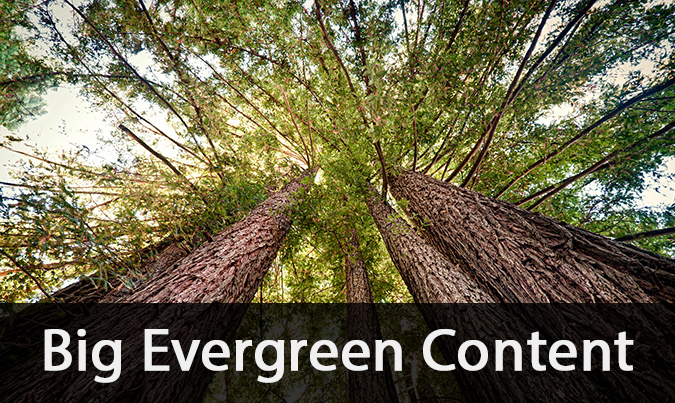
Big Evergreen Content
The idea for this post was sparked by Hannah Smith's talk at BrightonSEO 'Go Big or Go Home'(excellent write up on State of Search), which prompted me to revisit Dr. Pete's SEOmoz post at the end of last year 'Why Big Content Is Worth the Risk'. Both Hannah and Dr. Pete explain why big content is necessary and how it can help your business stand out in a very crowded world of below par blog posts:
"We all want the low-hanging fruit, but let’s be honest – the low-hanging fruit is rotten, bruised, and covered with the grubby fingerprints of all the other spoiled brats pawing at it."
The consensus of both the talk and the post is that big content takes around 40 hours to produce. Hannah compared this to an average 12 hours for 'small content' but I think that's a huge overestimation for the majority of businesses. James Carson recently alerted Twitter to the existence of a job ad for an agency looking for a Marketing Executive who for £18,000 a year had to write 25 blog posts a day. That's well over 6,000 articles a year on a range of topics, written by somebody with little knowledge about the subject and obviously no research.
With that much noise, it's important to be different to break through, and that's where big content comes in. But I'm going to go a step further and ask you to consider another element - sustainability. Another popular topic at BrightonSEO, and a common phrase in marketing blogs at the moment is Evergreen Content.
In the rest of this post I'm going to try and convince you why your content should be both big and evergreen for the holy grail of content marketing.
Craig Charley
22 Apr 2013
Last night Facebook announced Facebook Graph Search, putting to rest the many rumours surrounding the cryptic launch event in Los Angeles.
These rumours included Facebook Mobile & an external search engine, but the most popular rumour turned out to be spot on - Facebook has radically overhauled their internal search function in a move that should frighten other social networks, traditional search engines and privacy advocates alike.

There are already tons of posts about the new search function and very few people have access yet (you can sign up for beta here), so instead we are going to focus on how brands (and individuals) can optimise to appear higher and more frequently in search results. One of those lucky few to get early access was Danny Sullivan at Search Engine Land, so head over there for a full run down of how Facebook Graph Search works.
It's very interesting that Facebook is the first social network to bring out a search engine like this. On our SEO courses and social media workshops we emphasise how you can use social media to help rank better in search engines, maybe now we'll have to include a section on using SEO to rank better in social networks!
How Does Visibility Work with Facebook Graph Search?
| Mark Zuckerberg may claim that Graph Search isn't a direct competitor to Google, but it's still a search engine and so there will always be ways to rank higher. Facebook have managed to produce something that Google have been working on for a while - an Internet of Things. Instead of a database of web pages, they have a database of information on things - likes, photos, businesses, people, jobs, locations and many more - and can distinguish between these items. |  |
Your visibility rests on how your business is connected to searchers - the more of their friends have connected with you, the more visible you are in their search results. But this can be just one of many factors affecting your visibility, including:
- Total number of likes
- Total number of check-ins
- The level of engagement on your page
- How often people talk about your business
- The frequency that people check in/ engage
- The recency of check-ins/ engagement
- Your location
- Your potential reach (are your likes/check-ins just local or are people coming from further afield?)
There are likely to be many more I haven't thought of, and the impact of each is determined by the type of search performed.
If a searcher is looking for businesses their friends like, then that will be the major factor. If they're looking for businesses in their area then total likes and of course location will have more of an impact.
But it's not just friends! You can search using an overwhelming number of factors. My favourite example of this is again from Danny Sullivan - "Search for Restaurants run by employees of a particular cooking school". So it's not just about number of connections, but about the type and value of those connections.
Craig Charley
16 Jan 2013
Twitter cards are an easy and effective way to make your tweets stand out in your followers' feeds.
Don't be limited by 140 characters, add enhanced links, product descriptions, media and more - all without affecting that character count!
You can start using Twitter cards by adding a few lines of HTML to your pages which will then generate the card when someone tweets that link - this is a quick setup that should have a huge impact on your visibility on Twitter and help drive engagement.
They also have the added bonus of unlocking Twitter Analytics (Twitter advertisers will already have access).
Twitter Card Types
- Summary Card: A card for links including title, description, thumbnail image and author/publisher @ handle
- Summary Card with Large Image: Same as summary card but with larger image and small description
- Photo Card: Card with one photo
- Gallery Card: Collection of up to 4 photos
- App Card: Highlights a mobile app with a download link
- Player Card: A card that allows embedded audio & video
- Product Card: Details product information
Each card type requires a different set of meta tags which will you will need to add to your page. Once you've added the tags, you need to validate the page before Twitter approves your cards and they start showing in Tweets.
As mentioned, Twitter cards give you access to analytics to check the performance of your Tweets. It's a great way to monitor the effectiveness of different types of card and establish your top influencers.
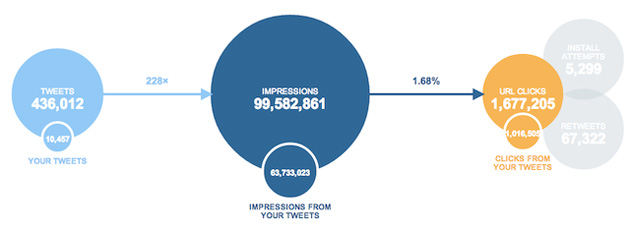
Not getting the results you desire? Find out where you're going wrong with our 2 day Social Media workshops and learn how to start growing your network.
Craig Charley
25 Jul 2014
Facebook has rolled out the new page design for the majority of business pages.
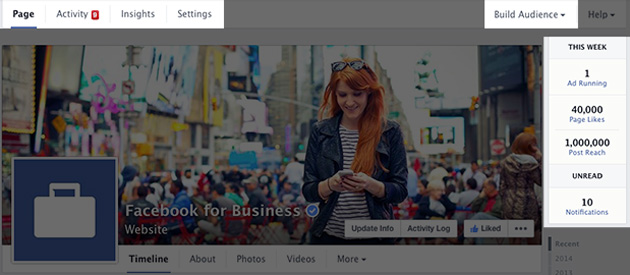
If you haven't already updated, then your page is currently in what I like to call 'limbo'.
The new design is visible to page admins, but not to fans or anyone else dropping by your page until you click the 'Update' button.
The update button is found on the new fixed admin frame to the right of 'Settings'.
If you're managing your page and still seeing the old layout then don't worry, there is a chance that all pages are getting the upgrade by June 6th.
Don't be confused when you update, read through my tips and find out what you need to know about the new Facebook Business Pages.
Find out how to get more out of your social media presence, including Facebook, with our two day Social Media course and see results within weeks.
Aaron Charlie
3 Jun 2014
Google Executive Chairman Eric Schmidt has been in the news a lot recently. Firstly he has a new book coming out, “The Digital Age”, from which The Wall Street Journal “leaked” the following quote:
Secondly, he’s announced that he is about to sell 42% of his Google stock (worth more than $2.5 billion). As with any story about Google, the conspiracy theorists have come out in force to guess at what these two moves mean. |
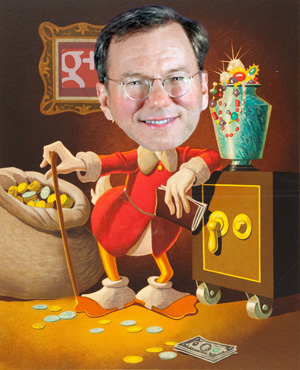 |
Marketing blog The Drum claimed that Schmidt’s verification quote is ‘confirmation’ that Google+ is to become a ‘search priority’ in future and that this is part of Google’s on-going battle with other social networks.
They've made the assumption that what Schmidt calls verification is the same as Google verification. With Google products you can verify yourself as an author, a publisher, a business, a place.
It didn't take long for certain SEO blog commenters to connect this to Schmidt’s stock sale, believing that the move towards ‘Google verification’ will force businesses to buy more ads, increasing the value of said stock.
Of course, as SEOs it is always important to listen to Google employees, especially those at the top. As one of the top dogs at Google, Schmidt’s personal views are always going to trickle down to those below him. The first piece of advice on our SEO courses is to go and read everything that Google has published about SEO!
But what does Schmidt mean Google+ when he uses the term ‘verified’?
Craig Charley
13 Feb 2013
Much has been said about the usefulness of Social Media within Project Management, but a topic that as yet seems to have been left untouched is how Project Management can help in Social Media Marketing campaigns.
Many of the principles and techniques that we teach in our Project Management Training, as well as on our PRINCE2 Course, can be applied to Social Marketing campaigns in order to improve their effectiveness and efficiency.
In this post we'll be taking a look at some and how they should be enacted.
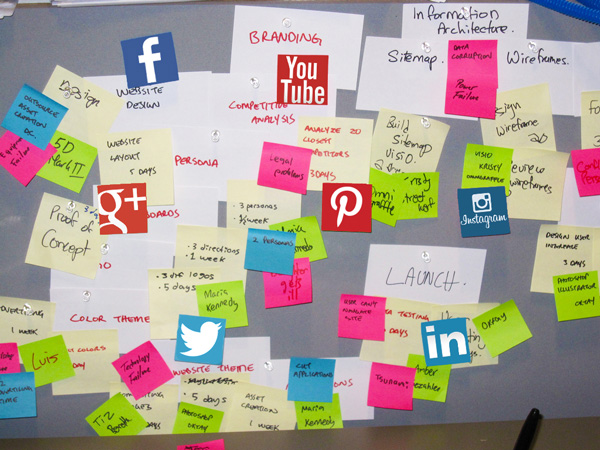
Initiating a Project
The 'Initiating a Project' stage of PRINCE2 can certainly be applied to a Social Media campaign. This process effectively outlines the reasons for and initial format of a project.
With regard to a Social Media campaign, it would require an understanding of the goals you hope to achieve by engaging on this platform.
It would also set out the preliminary ideas as to how to go about enacting this, both from a strategic point of view (what sort of things will you post, who are you targeting) and from a logistical perspective (which networks will you use and how much.)
Andy Trainer
8 Apr 2013